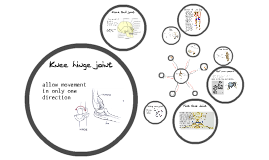Human skeleton
Transcript: Human Skeleton Diseases Understanding Disorders and Their Impact on Health Importance of Bone Health Overview of the Human Skeleton Common Misconceptions Arthritis Osteoporosis Osteomalacia Maintaining bone health is essential for preventing fractures and other skeletal diseases. Factors like diet, exercise, and lifestyle choices significantly influence bone density and strength throughout life. Osteoporosis is a condition characterized by reduced bone density, leading to increased fragility and risk of fractures. It commonly affects older adults, particularly postmenopausal women, and is often asymptomatic until a fracture occurs. The human skeleton consists of 206 bones that provide structure, protect vital organs, and facilitate movement. It supports the body and plays a crucial role in producing blood cells and storing minerals. Many people believe that bone diseases primarily affect the elderly, but conditions like osteoporosis and arthritis can arise at any age. Misunderstanding these diseases can lead to delayed diagnosis and treatment. Arthritis encompasses various conditions that cause inflammation of the joints. Common types include osteoarthritis and rheumatoid arthritis, both leading to pain, stiffness, and reduced mobility, significantly impacting daily activities. Osteomalacia refers to the softening of bones due to vitamin D deficiency, leading to inadequate mineralization. This condition can result in bone pain, muscle weakness, and increased fracture susceptibility, primarily seen in adults. Scoliosis Nutritional Deficiencies Paget's Disease Genetic Factors Lifestyle Factors Environmental Influences Scoliosis is characterized by an abnormal lateral curvature of the spine, which can appear during childhood or adolescence. Severe scoliosis may impair lung function and lead to chronic pain; however, mild cases require minimal treatment. Paget's Disease disrupts normal bone remodeling, leading to enlarged and weakened bones. It is more common in older adults and can cause pain, deformities, and an increased risk of osteosarcoma, particularly in the pelvis and skull. Several bone disorders, including osteoporosis and osteogenesis imperfecta, have a hereditary component. A family history of these conditions can significantly increase the likelihood of developing similar health issues, highlighting the role of genetic predisposition. Sedentary lifestyles increase the risk of bone disorders, as regular weight-bearing exercise strengthens bones. Additionally, behaviors such as smoking and excessive alcohol consumption negatively affect bone health and increase fracture risk. Lack of key nutrients such as calcium and vitamin D compromises bone density, making individuals more susceptible to fractures and bone diseases. Proper nutrition is vital for maintaining healthy bone structure and strength over a lifetime. Environmental factors such as exposure to heavy metals and pollutants can adversely affect bone health. Additionally, living at high altitudes or in regions with limited sunlight may lead to vitamin D deficiency, increasing bone disorder risks. Diagnostic Procedures Preventative Measures Treatment Options Future Research Directions Diagnosing bone diseases often involves a combination of medical history assessments, physical examinations, and imaging techniques such as X-rays, MRIs, and bone density scans. Blood tests may also be utilized to evaluate calcium levels and other vital indicators of bone health. Preventative measures for skeleton diseases encompass maintaining a healthy diet rich in calcium and vitamin D, engaging in regular weight-bearing exercises, and avoiding smoking and excessive alcohol consumption. Regular health screenings also play a vital role in early detection and prevention. Treatment for bone disorders includes medications like bisphosphonates for osteoporosis, vitamin D and calcium supplements for deficiencies, and physical therapy. In severe cases, surgical interventions may be necessary to correct structural deformities or repair fractures. Future research in the field of skeleton diseases aims to enhance understanding of cellular mechanisms involved in bone health, improve treatment modalities, and explore gene therapy as a potential avenue for curing hereditary bone disorders. Innovations in biomaterials for bone regeneration are also on the horizon.

















